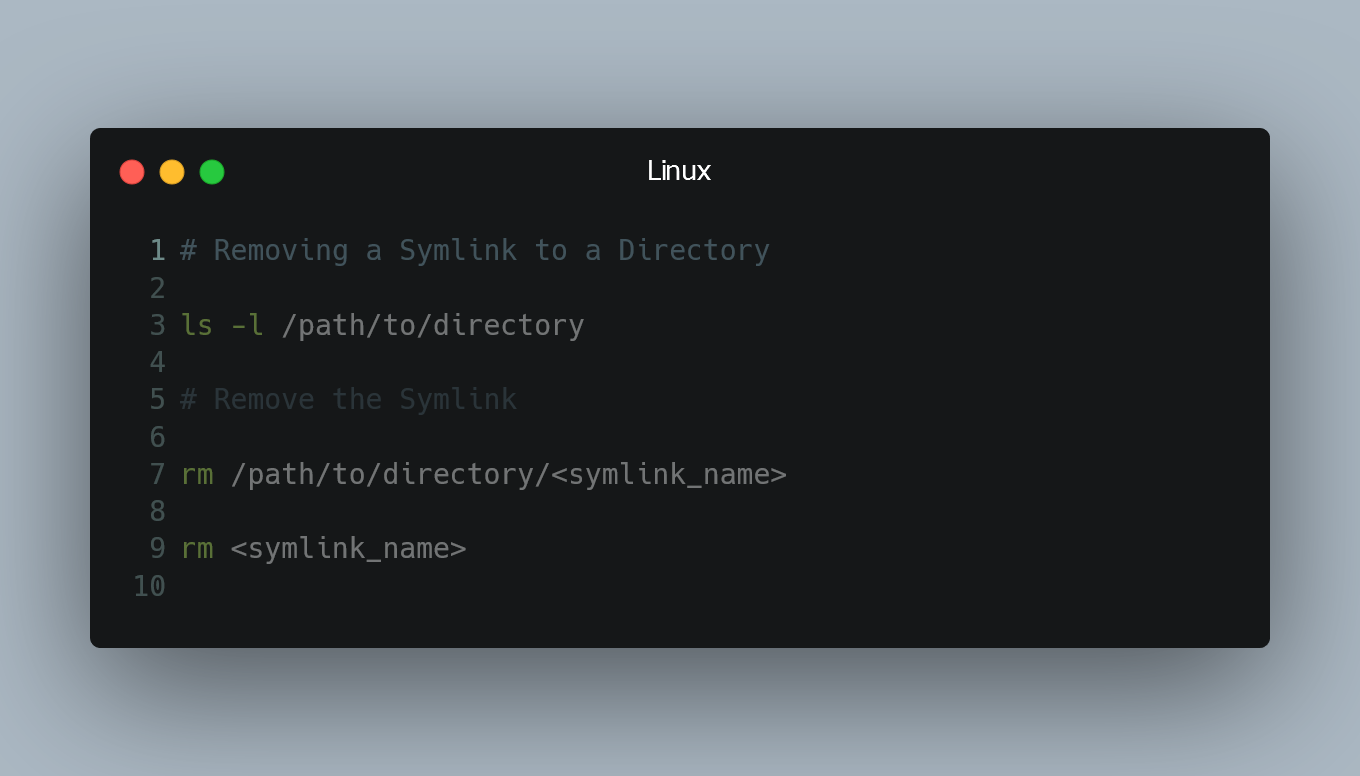
In Linux, you can remove a symbolic link (symlink) to a directory using a simple command.
Using the rm Command
The rm command is used to remove files and directories, and it can be used to delete symlinks as well.
Step 1: Identify the Symlink
First, locate the symlink that you want to remove. You can use the ls command with the -l option to view the symlinks in a directory:
ls -l /path/to/directory
This will display the contents of the directory along with information about symlinks, including their target paths.
Step 2: Remove the Symlink
To remove the symlink, use the rm command followed by the symlink name. Replace <symlink_name> with the actual name of the symlink you want to delete:
rm /path/to/directory/<symlink_name>
If the symlink is in your current working directory, you can simply use:
rm <symlink_name>
Example: Removing a Symlink
Let's say you have a symlink named my_symlink in the directory /home/user/documents, and you want to remove it. You can use the following command:
rm /home/user/documents/my_symlink
or if you are already in the /home/user/documents directory:
rm my_symlink
0 Comment

